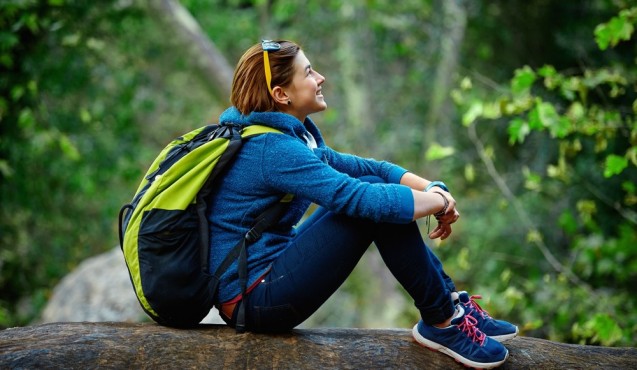The Walking Mentorship, Day 0: What’s In Your Backpack?

João Perre Viana is the mastermind behind the Walking Mentorship program, an innovative one-week experience that helps people face their personal and professional challenges while taking a 120-kilometer (74.5-mile) hike along the Camino de Santiago.
“The purpose of this methodology is to help gain perspective on what is important (both personally and professionally), update our reality maps, and create an action plan for the future,” Viana says.
Viana’s next program starts this Sunday, and over the course of the next week, he’ll be updating us daily about the journey he and his participants are about to embark on. This post was written as Viana prepares for the upcoming hike. – Ed. Note.
–
I’ve lost count of how many times in the last 30 years I have prepared my backpack and hiking gear, a repetitive action at first sight that often leads to unpredictable outcomes. This week was no different.
A couple of days away from the beginning of another Walking Mentorship program, it is inevitable: I have to find a way to fit all my needs and belongings into a 45-liter rucksack. It’s a simple exercise, but depending on how you go about it, you can learn some valuable lessons from it.
There is a rule – probably the only rule – that you should never forget when you’re preparing for a hike: Whatever you put in your backpack, you will have to carry it for the whole walk.
This is one of my favorite analogies between walking and life – or maybe between life and walking, if I ever find a difference.
Experienced hikers and travelers know that you should not take more than 1/10 of your body weight, but truly speaking, you only understand what you can really take when you start walking. Some days you will notice you can take more, and some days you have to take less.
Just like in life.
The most important skill you need to master is the art of creating a “perfectly unperfected balance” – which can only be achieved by learning how to select the most important things while getting rid of those superfluous items.

Looking at my backpack, I understand the size and the weight of my “universe”: a needle and thread, a couple of t-shirts, one shirt, two pairs of shorts, a polar fleece, three pairs of socks, a sleeping bag, three pairs of underwear, a poncho, sandals, hat, sunscreen, a towel, earplugs, and a pen.
I get a funny feeling when I look around the hundreds of (more or less important) things in my office and I compare them with my list of essentials for hiking. Experience tells me that for the next 120 km of happiness, I will barely need much more.
I stop for a moment and think about where the unperfected balance in my life is, that thin red line that reassures me that I’m not carrying more than I can take.
Both life and the route are magnanimous. If your load becomes too heavy, you probably need to drop something. But don’t worry – just a few kilometers up the road, you will probably understand the reason why.
João Perre Viana founded the Walking Mentorship program.

